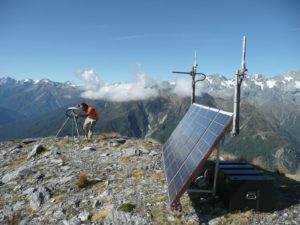Cantabrians have former seismologist Dr Helen Anderson’s vote for the world’s best citizen seismologists, she writes in Fairfax’s science page, Catalyst.

An excerpt (read in full):
Before [GeoNet], seismologists like me only knew an earthquake had occurred when the “drum” needles started shaking and the telephone for the seismological observatory became jammed with calls.
For those first 15 minutes or so the task was to find out from callers where and how the earthquake had been felt. The duty seismologists’ job was to calculate the location and magnitude, often based on telephoned readings from seismometers located around the country. This took at least 15 to 30 minutes; a very long time when every minute counts.
And that was during normal working hours.
At night or at weekends, the duty seismologist was alerted by a pager which signalled time to get into the office. One of the most experienced seismologists didn’t drive so when he was on duty that meant a rapid bike ride into the observatory. Earthquake reporting in those days was not “real-time” work.